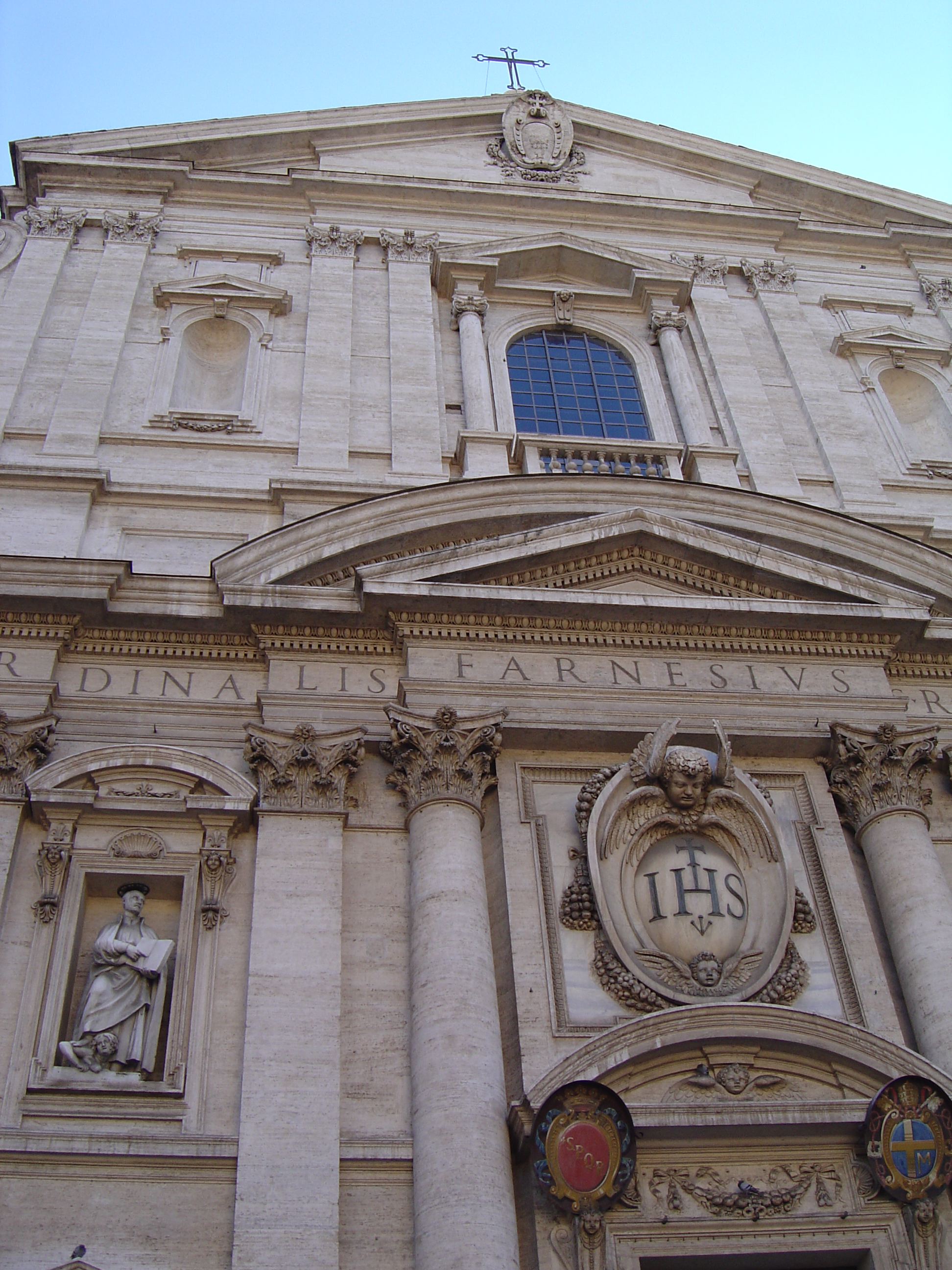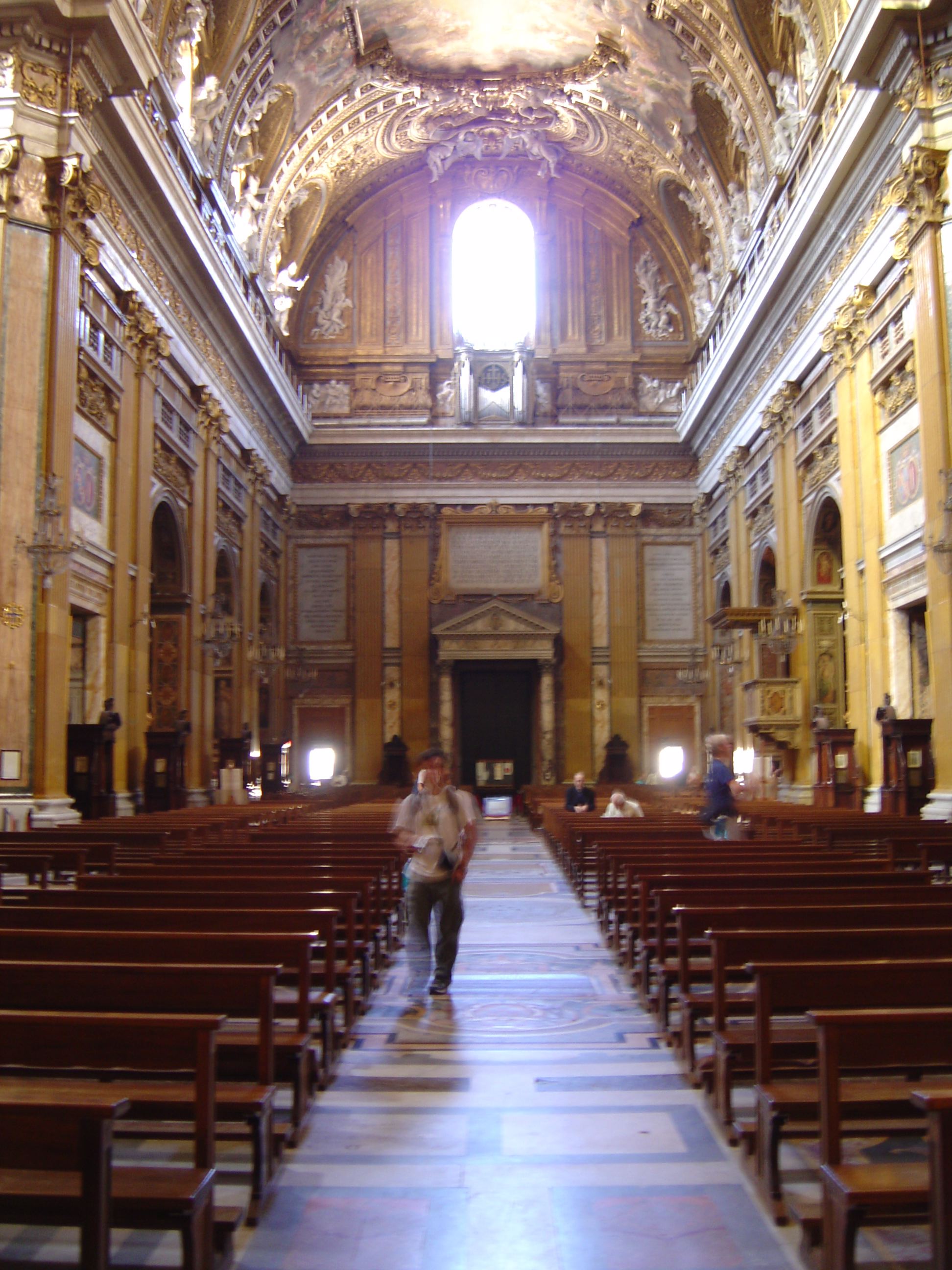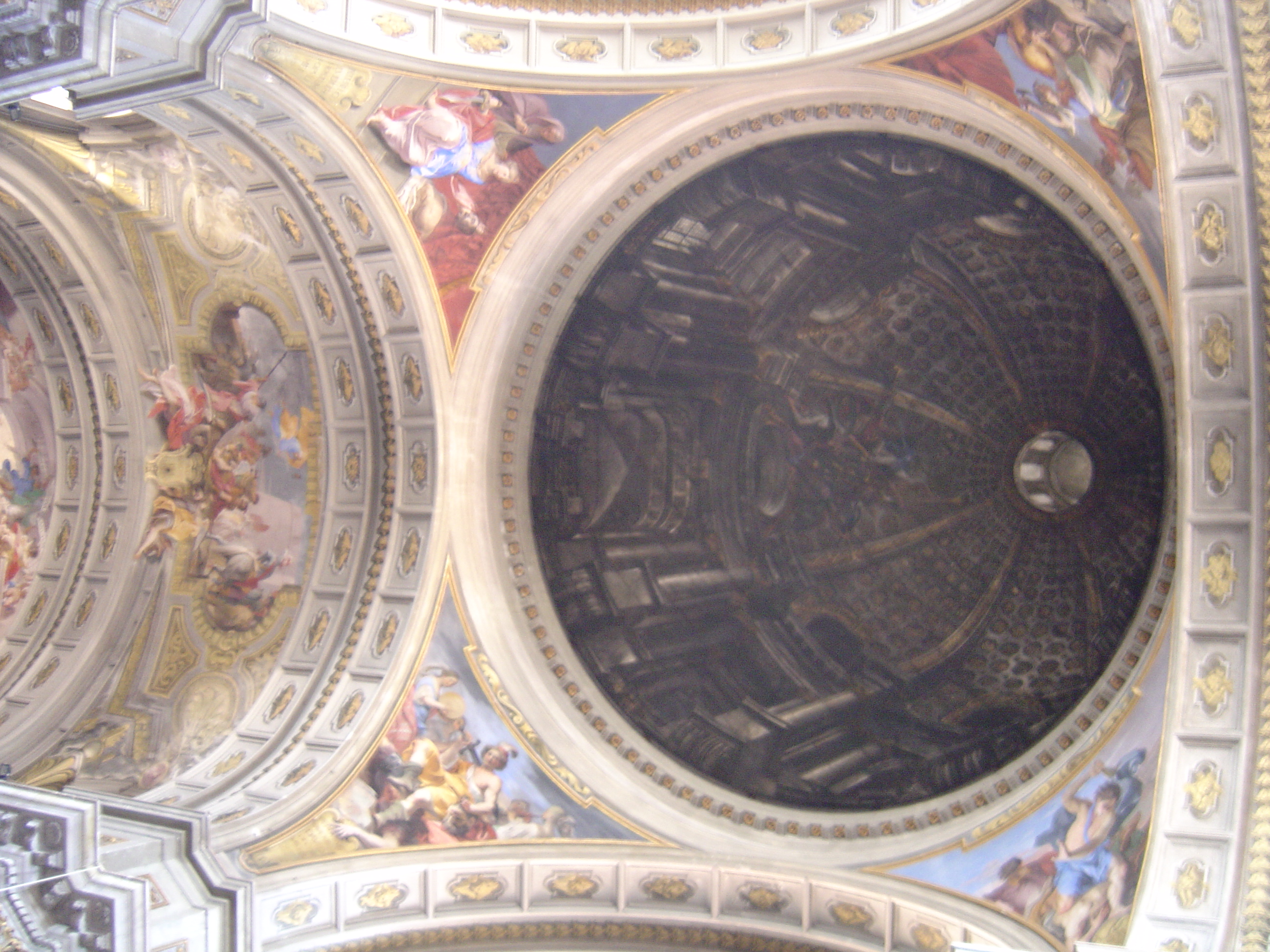|
|
 |
|
090904 - Churches: the Jesuits |
|
written
by mcwilson / 09.17.2004 |
|
|
| |
Itinerary |
| |
Today we left the Palazzo Pio at 9:00 am to investigate some churches built in the time of the Jesuits. First, we heard a little about Baroque architecture from Andrea Christopher, who did a very good job explaining the characteristics of Baroque architecture as compared to Renaissance architecture. Shortly thereafter, Helen Cicero led us on a detailed tour of two churches which were conveniently close to the Rome center, and which were both built during the age of the Jesuits.
The first of these churches, Il Gesu, was quite magnificent. This church’s façade exemplified Baroque architecture with its majestic swirling decorations, and heavy cornices. The church was beautiful from the outside, but really gave no indication of what was to be found inside. The interior of the church was decorated almost entirely in gold fixtures, colorful marble columns, and not a surface of the ceiling left unpainted with frescoes. The ceiling of this church contained a large fresco that extended beyond the barrier of the trim that surrounded it. This is a technique that we had not yet seen, and it seemed to really fit the mood of the fresco depicting the heretics being thrust out of heaven and back down to earth. This church contained a large dome at the end near the altar, which let a large amount of light into the church, making the gold accents look even more glorious.
The next stop on our Art History expedition was “Tazza d’ Oro,” a bar near the Pantheon which is famous for its coffee. We ordered an incredible amount of cappuccino, a few café lattes, and one café granita (for James who dared to be different). Some of us were enjoying our first cappuccinos ever, which is nothing short of a landmark occasion, and deserved some celebration. After a sufficient time of allowing the caffeine to take effect, we continued on to our second church of the day, San Ignazio. This church looked almost exactly the same from the outside, and some of us joked that it seemed like we had walked in a circle and revisited our first church of the morning. This church was much different on the inside, and had another kind of fresco which we had not yet experienced. The ceilings in this church incorporated an illusionist theme, where from one point (designated by a small circle of marble in the floor), the walls appeared to continue upwards into the heavens toward the depiction of Jesus. This provoked much thought and discussion amongst us about what the artist had actually accomplished with this design. What deserved perhaps more attention, however, was the dark impressionist depiction of a dome in a circle of ceiling space near the altar area. From a separate spot on the floor, this piece became a very convincing depiction of a dome (which actually existed in the church that we had visited earlier that day). Apparently the church had a shortage of funds while building the church, and decided to just paint one in, instead of spending the sums required to build one.
After our Art History tour concluded for the morning, we took a break for some lunch, and reconvened at 2:00 pm for our Italian class. In class we used our newly gained skills in communication (and Sabrina’s expanse of Italian vocabulary) to construct interview questions for our sociology class research projects. This translation session proved to be very helpful in progressing our understanding of the sociology of Rome. After Italian everyone went their separate ways for the evening.
|
| |
|
| |
|
| |
Highlights |
| |
In the Campo dei Fiori women’s apartment, we had a fabulous group dinner cooked by Kirstan Weiderholt from a recipe of her grandfather. After this dinner, for the sole purpose of expanding our knowledge of the social interactions of Italians, we headed out on the town for a night of dancing. This night of dancing was very fun, and certainly gave us a better idea of what Italian night life was like. The night did eventually end in sleep, however, as it was a Thursday night, and students such as ourselves can’t be staying out ALL night.
|
| |
|
| |
|
| |
Images |
| |
| |

|
|
| #1 - Facade of Il Gesu |
|
| |
|
| |

|
|
| #2 - Interior aisle of Il Gesu |
|
| |
|
| |

|
|
| #3 - Getting Coffee at Tazza d' Oro |
|
| |
|
| |

|
|
| #4 - Fake dome on ceiling of San Ignazio |
|
| |
|
| |

|
|
| #5 - The ladies from the Campo dei Fiori Apartment pose before a night of dancing |
|
| |
|
#1 - The Facade of Il Gesu provided us with a very good example of Baroque architecture. This example allowed us to recognize elements of architecture on buildings which we saw later that day.
#2 - This is the interior of Il Gesu. The theme of Baroque architecture continued into the interior of the church, where everything seemed to be covered with gold. The church was very extravagant, and much different than anything that we had seen before.
#3 - Here we are getting coffee at Tazza d' Oro, a famous coffee shop near the Pantheon. The bar man got a kick out of pouring that many cups of cappuccino, although I have a feeling it wasn't the first time because he seemed to have no problem preparing that many drinks.
#4 - This is the fake dome on the ceiling of San Ignazio. This fresco was very convincing as the real thing until one moved from the space on the floor where the perspective was perfect.
#5 - Here we are getting ready to go dancing. We did pretty well fitting in with the well-dressed Italians after an afternoon of shopping around the Campo.
|
| |
|
| |
|
|
 |
|
